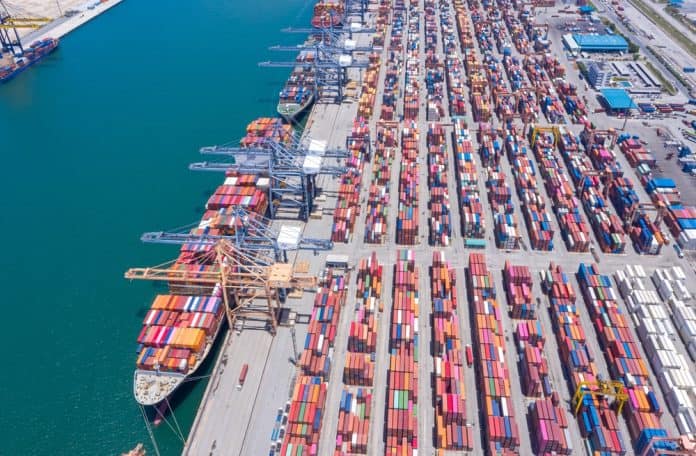A lot of things have happened over the past two years that have affected shipping freight rates. There was, of course, COVID-19, but also trucker shortages, chassis shortages, equipment shortages, a vessel space crunch, the 2021 Suez Canal incident and its aftermath, the Yantian and Ningbo port closures, typhoons in Asia, blank sailings, shorter work hours for Chinese factories due to new Chinese government energy control schemes, and an extraordinary demand increase from U.S. importers.
No matter the exact cause, the shipping industry now faces all-time high freight rates.
Shipping industry stakeholders have faced many of these events, and they have changed the shipping industry irrevocably, for good. One event after another pushed the overall supply chain to its limits. Long gone are the days when you wanted to book cargo and had five different shipping options with wide open space and equipment availability. Reliability was extraordinarily dependable, but it has decreased to 9.9% after dropping for four consecutive months.
Importers have been scrambling to find ways to get their cargo from origin factories to their warehouses and ship them out for the Christmas season. In the past few weeks, some options emerged such as small charter vessels which guarantee space and equipment after receiving some deposit in advance. This was a good alternative for a few weeks as it seemed there was a good option for urgent cargo. However, it was understood very quickly that this wasn’t the solution everyone was looking forward to. When the first charter vessels started to arrive at the Ports of Los Angeles and Long Beach, they were the last ones to be serviced at the piers. It took longer for the longshoreman to unload them, and the vessels were small and riskier to move for high-value cargo. Also, most of those vessels had capacity of only 2,000 to 4,000 TEUs, which is tiny compared to the giants.
Getting cargo out of the origin country is one thing, but utilizing truck power after the discharge at U.S. ports is another issue. And, with sky-high truck rates, average spot rates for port trucking in the U.S. have increased 32% in the past year. Other daily challenges are chassis shortages, lack of terminal appointments, and empty container returns.
At one point, average rail transfer times from the Ports of Los Angeles and Long Beach were almost one month. Many importers looked to ship to the Port of Oakland as a gateway port in the hopes of beating Los Angeles port congestion. That faded quickly after only few sailings due to extraordinary demand, and many carriers had to cancel their service offerings to this port.
In order to match deadlines, many importers are skipping the rail part of the move and are transloading and moving cargo with flatbeds or as a truckload from gateway ports. There is extraordinary demand in every single part of logistics and supply chain-related service offerings. U.S. East Coast terminals have done better, but congestion issues are also catching up with them. For example, the Port of Savannah went from one of the best-performing posts to one of the most-congested in a matter of weeks.
The list of issues goes on and on. Two main questions are: where do we go from here and what kind of lessons can all stakeholders take away from this confusing and frustrating situation.
The following are the lessons many shipping stakeholders should take into account in the future to avoid making these issues worse.
1. Invest in a good relationship with your service providers. Do not push them to the edge when the market is soft. Rather, build long-lasting, meaningful relationships so when the time comes you can get the same support in return.
2. Diversify your supply chain. Do not depend on one country, one shipper, one port. Have an emergency plan in place in case a situation develops or worsens.
3. Invest in technology. The shipping and logistics industries have lots of new technology solutions that can help improve operations and make things move more efficiently.
4. Be in the know. Follow the latest trends and expectations in the supply chain to get ahead of the curve.
5. Work with companies that can support you during crises and perform the same way as in the normal conditions. Pay that little premium for reliability and dependability.
The current chaotic situation in shipping will have long-lasting effects on supply chain logistics.
The immediate, short-term effects of the current situation have:
1. Increased nearshore sourcing activities.
2. Increased freight costs.
3. Reduced quality in lead times and all logistics/shipping services.
The long-term effects of the current situation will be:
1. A change in contract negotiations – transitioning from low long-term contract rate negotiations to acceptance of higher contract rates in return for guaranteed space contracted rates. This will be a major shift.
2. Reduced popularity of just-in-time order management.
3. An increase in inventory costs.
4. A warehousing space crunch and an increase in warehousing space around major ports.
So, what happens next?
The current trend of increased demand is expected to last until the Chinese New Year when most factories will be closed. In my opinion, there is no quick fix to the current issues. It will take a large supply injection into the market along with larger equipment availability to control the current issues.
Considerable vessel supply is not coming in until end of 2022 which weighs heavily on my point that the majority of the above broader problems will be here to stay. Once there is enough supply, it will take extraordinary management skills to keep freight rates at certain levels. As mentioned in my previous articles, ocean carriers have learnt to manage capacity very well by the means of blank sailings. Considering there are only three major alliances, freight rates might never see the levels they were before the pandemic, or at least it won’t happen in the near future.




